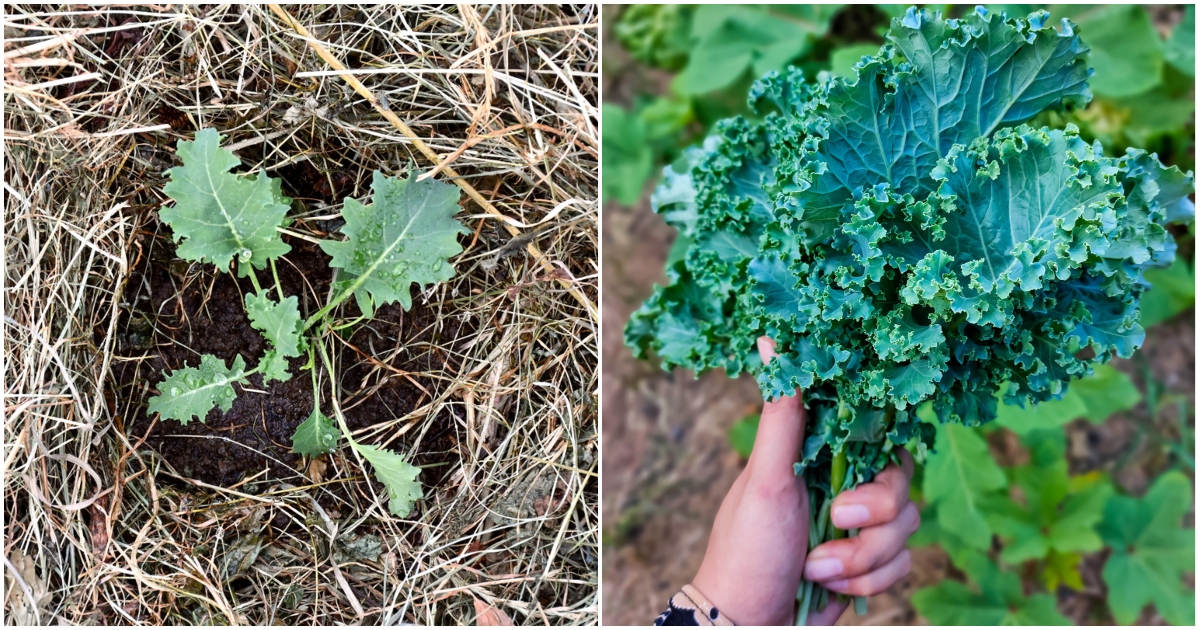
If you are eager to find out how to maximize your kale harvest, the answer is plain and simple – cut and come again.
It’s as easy as it sounds and it really is the ultimate way to make the most of your kale harvest.
See, when you harvest the outer leaves at a gradual pace, it allows the younger, inner leaves to keep growing. This act of taking only what you need for a meal or two, gives you the opportunity to eat kale all season long.
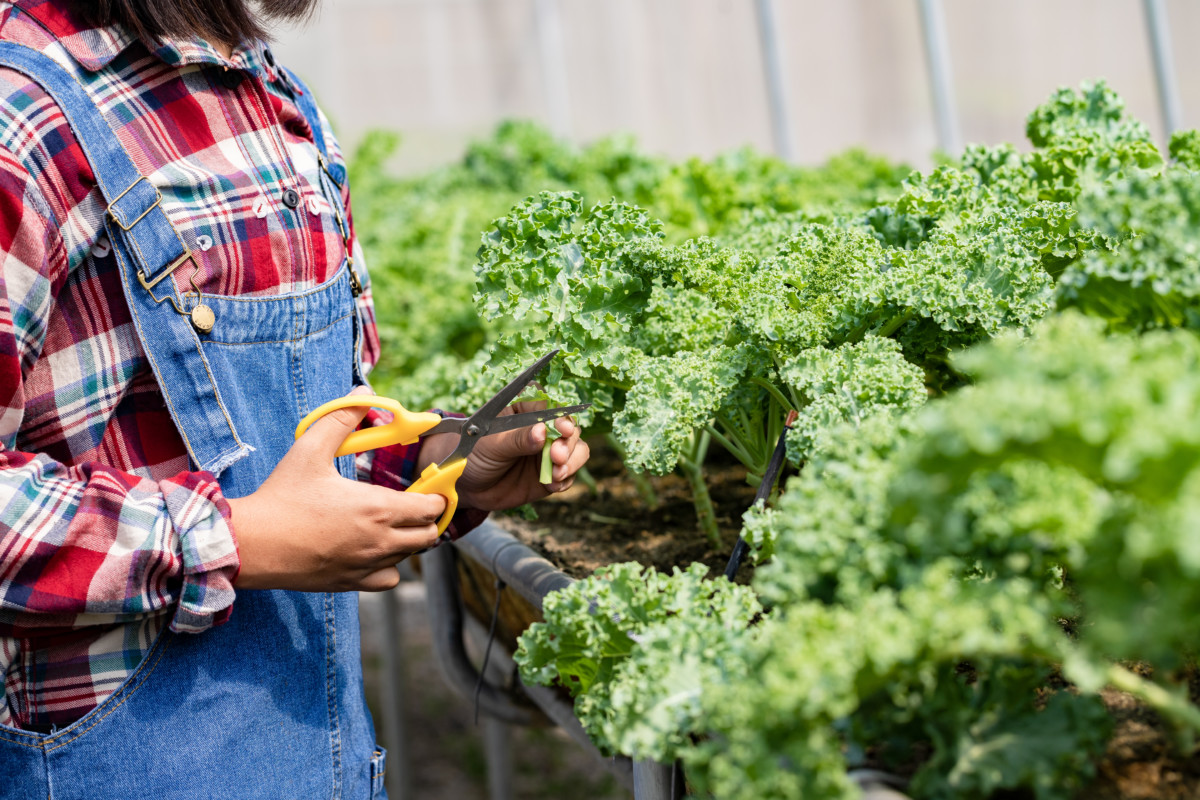
Best of all, when you adopt this cut-and-come-again harvesting method, you don’t have to devote a large amount of space to your greens.
Knowing how large kale can get (30″ wide and 24″ or more in height), this can be an important issue for gardening in small spaces.
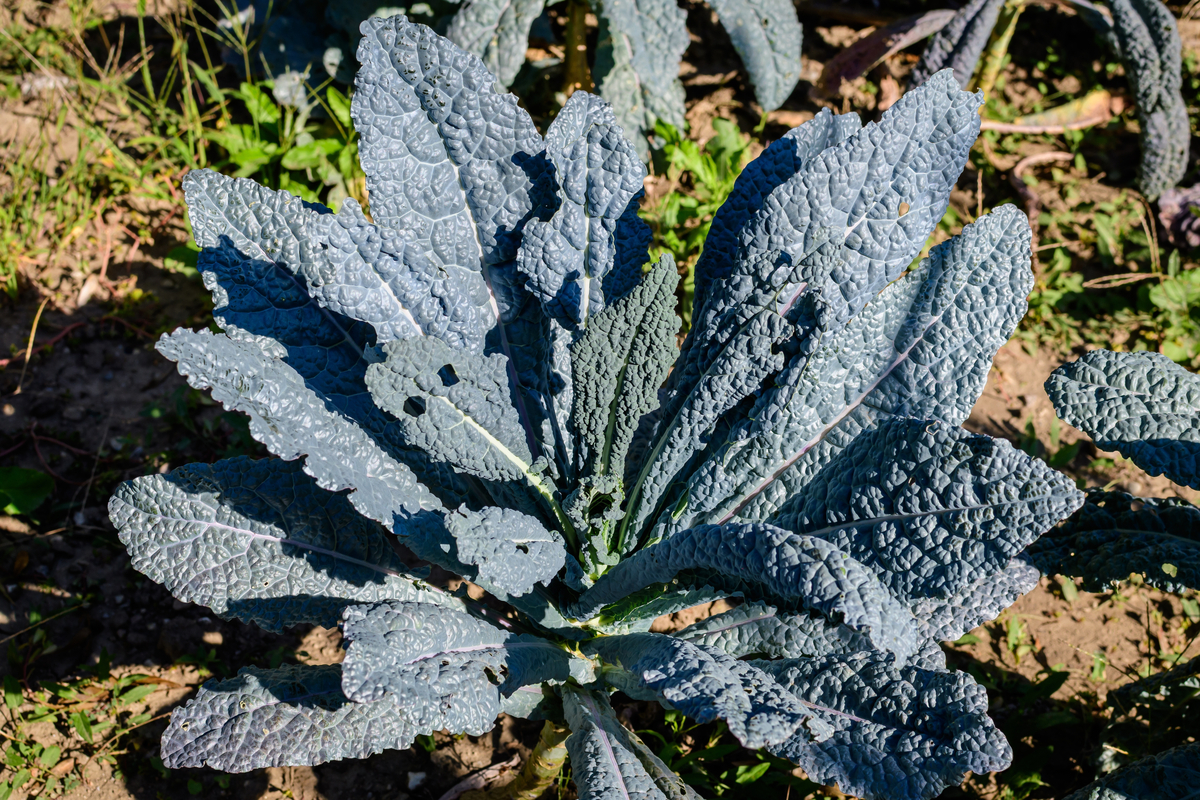
Depending on the size of your household, as well as knowing your typical kale consumption, you can also get away with growing fewer plants, saving room for other nutrient-dense vegetables.
How Many Days Till Your First Kale Harvest?
One of the first things a gardener thinks of when sowing seeds or settling transplants in the ground, is how many days till the first harvest? We can’t help it. It’s something we feel the need to plan for.
If you’ve ever made your own kale chips, you’re probably already longing for their delectable crispness adorned with garlic powder, paprika and salt. We’ll get to that recipe later on.
What you need to know is that direct seeded kale will be ready for harvest as early as 55-75 days after sowing seeds in the ground.
You can harvest from transplants 30-40 days after nestling them in the soil.
Gardening is all a matter of working and waiting. As long as the outer leaves are large enough, go ahead and give them a little nibble before the rabbits find them – but you should do so very sparingly for their own health.
As long as you leave the terminal bud intact, the leaves will keep growing, leaving you many months to harvest from the same plant. I can foresee many kale stir-fries, salads and smoothies in your near future.
Quick Tips For Growing Kale
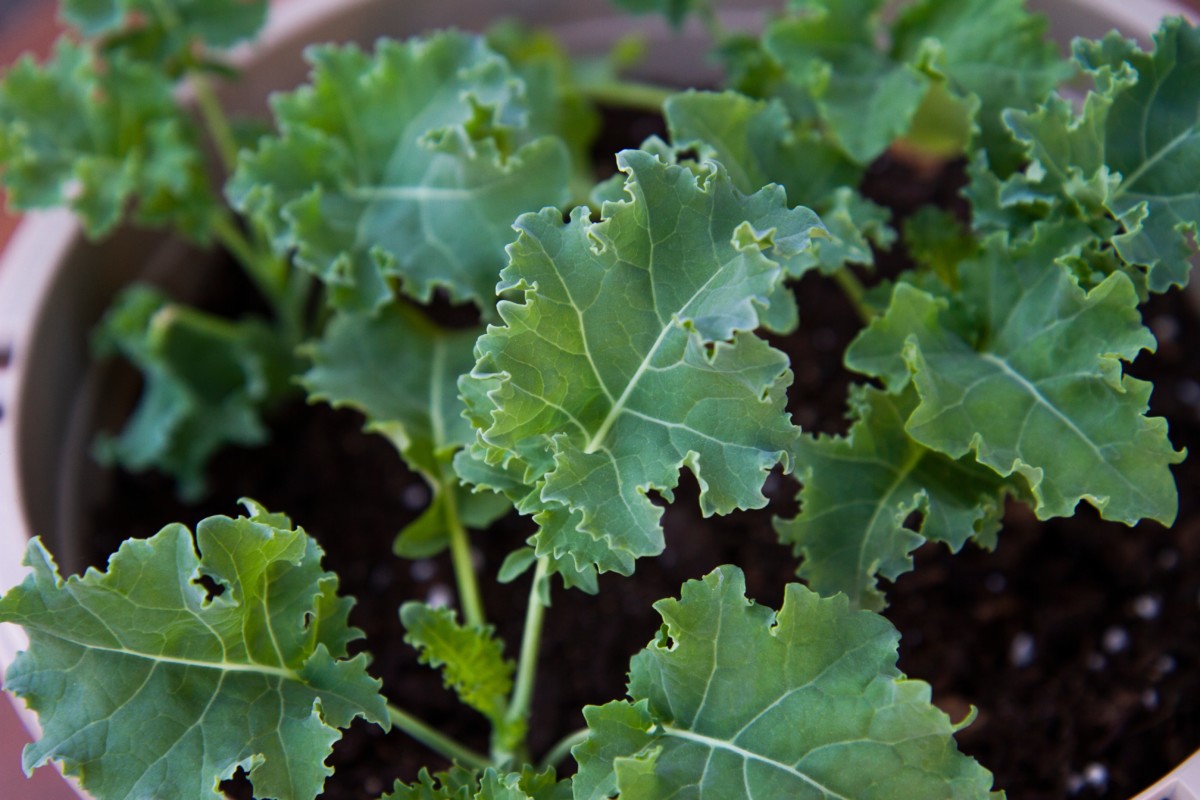
Kale (Brassica oleracea) is quite a versatile garden veggie, here’s why:
- it is a shade-loving plant rather than a sun-worshiping one
- kale can be grown directly in the ground, in raised beds or in containers
- seeds can be sprouted indoors approximately 6 weeks before the last frost date to give you a jump start on the season
- kale can be planted in the spring or fall
- companion planting with kale is easy enough: it likes beets, cucumbers, onions, chard and potatoes
- mulching your kale crop keeps moisture in the soil
When you take flea beetles out of the picture, growing kale is really quite easy.
As long as you get them planted on time, they stand a great chance of becoming large luscious leaves.
Kale will also benefit from a soil pH of 6.0-7.5, compost-enriched soil and an occasional dose of your best homemade fertilizer.
Sowing Kale Seeds
If you’ve invested in a small package of kale seeds, you probably already love it for its flavor or health benefits, or both.
When you have a chance, take a peek at the seeds. They look a lot like cabbage seeds, right? Or maybe more like Brussels sprout seeds?
Before heading out to the garden with members of the Brassica family, be sure to keep track of what goes where, because they’ll all look very similar for a while.
And if you’d like to save seeds, get organized with some envelopes and labels to know for sure what’s what.
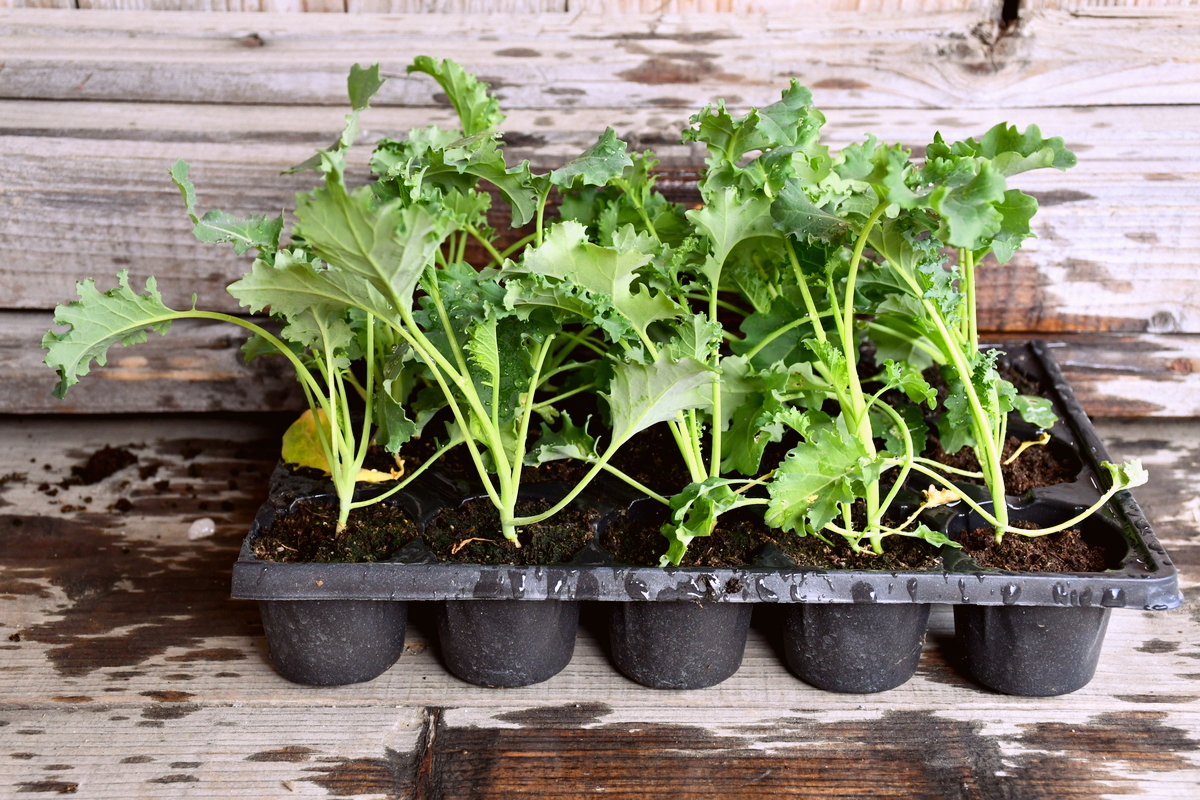
As far as planting goes, kale seeds can be sown several weeks ahead of the last expected frost date in spring. Elizabeth has some excellent tips for starting seeds indoors.
Once you are satisfied with your selection of containers and growing medium, gently sow the seeds 1/4″ deep. Out in the garden, sow them at the same depth.
Here, it’s okay to overplant, then thin out the weakest plants later.
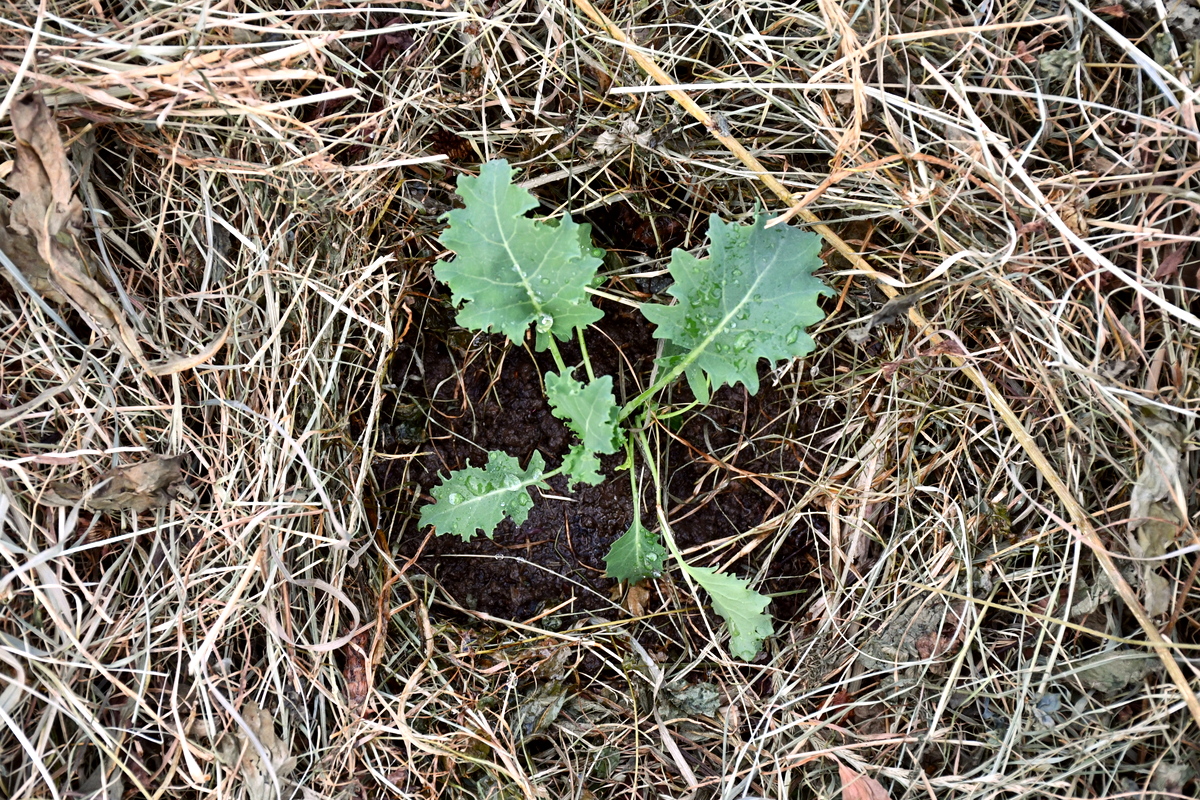
Water Requirements For Growing Kale
Whether or not you have optimal soil conditions, is in part up to nature. One thing you can’t skimp on, however, is water.
Because kale is such a prolific grower, it needs plenty of moisture. Anywhere from 1-2″ of water a week is essential to keep it from wilting. That and a shade cover when the sun shines too bright. It’s worth noting that kale doesn’t appreciate temperatures much above 70°F.
Back to the rain/irrigation for a moment – the challenge is to keep the soil steadily moist.
One way to do this is with a layer of mulch. Be it hay, straw or grass clippings, it really doesn’t matter. So long as it prevents weeds from taking over, it’s doing a good job.
Preventing Diseases On Your Kale Crop
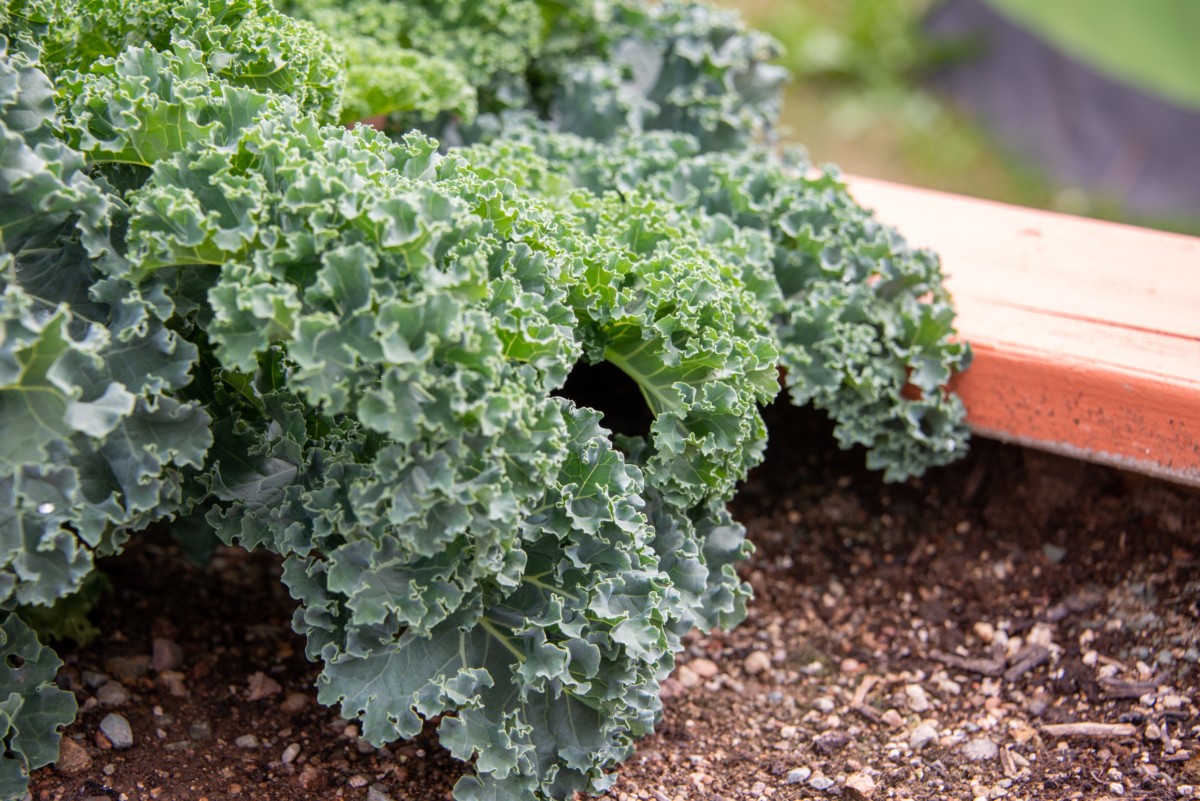
It can’t be stressed enough: try not to stress your plants.
Give them water, fertilizer, hopefully enough sun, keep them weed-free and pluck the random outer leaf to encourage the growth of the entire plant.
Beyond that, you should also practice crop rotation and start with clean soil mixes when sowing seeds.
If you’d like to get into the ugly details of kale diseases, look no further than these Tips For Protecting Kale From Pests and Diseases from Gardener’s Path.
It discusses everything you might come across in your own garden from fungal diseases, to water mold diseases, bacterial diseases and insects (cabbage aphids and loopers, diamondback moths, cabbage worms and thrips), as well as nematodes.
The best organic method for preventing these diseases is what’s already been said: crop rotation. Get that practice under your belt, or spade for that matter, and your future garden harvests can only improve in quality and quantity.
Kale Spacing
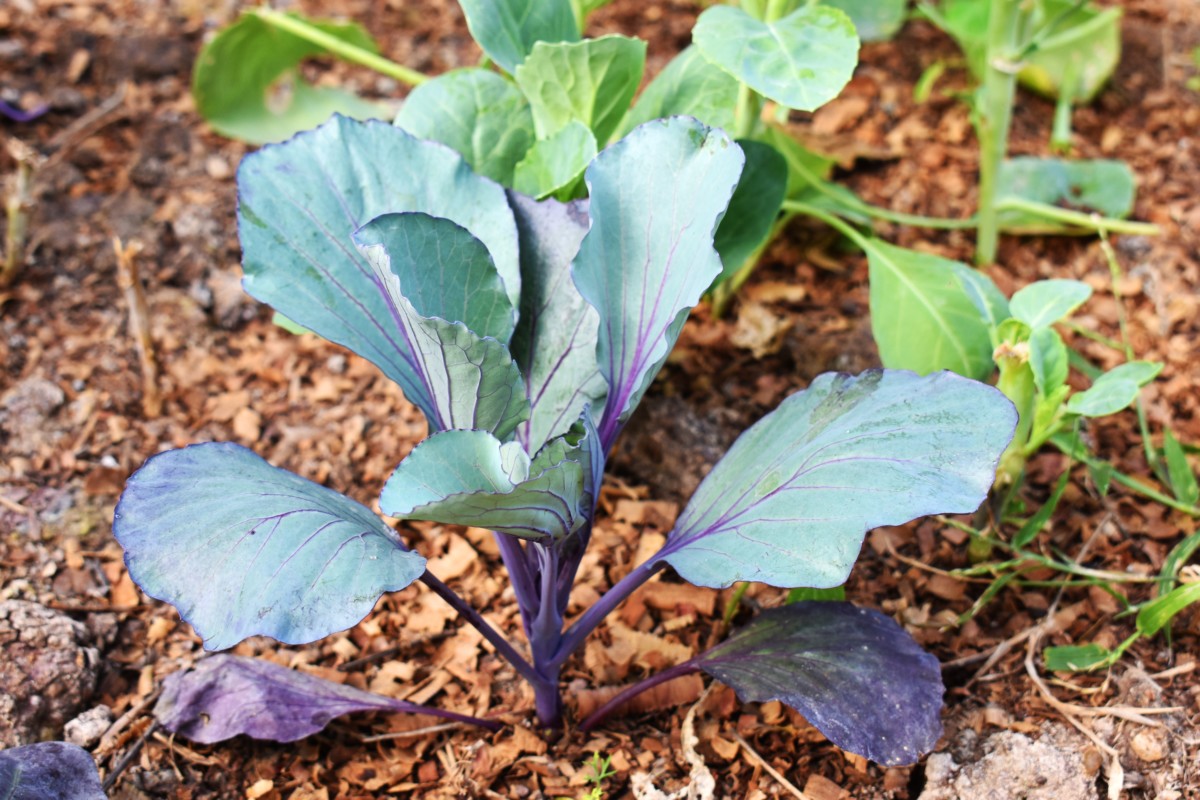
While it’s always tempting to stuff as many plants into the garden as possible, it’s something that just shouldn’t be done. Plants like their individual space, including kale.
Spacing is important for several reasons:
- overcrowded plants may suffer from a lack of sun
- well-spaced kale makes it easier to search for cabbage worms and other pests
- good airflow between plants prevents fungal diseases from taking hold
- uncrowded greens and other vegetables don’t have to compete with each other for nutrients
- lastly, crowding does not increase your harvest, in fact, it does the opposite
So how far apart should your kale plants be?
Well, it depends on whether you’re going for tender salad material or giant leaves for chips and heartier fare.
In general, seedlings should be thinned to 12-18″ apart, with 2-3′ between rows.
Related reading: Plant Spacing – 30 Vegetables and Their Spacing Requirements
Kale Varieties Worth Growing
By now, you’ll have discovered that kale is a perfect cool-season vegetable to grow in your garden.
But what varieties of leafy cabbage are worth planting?
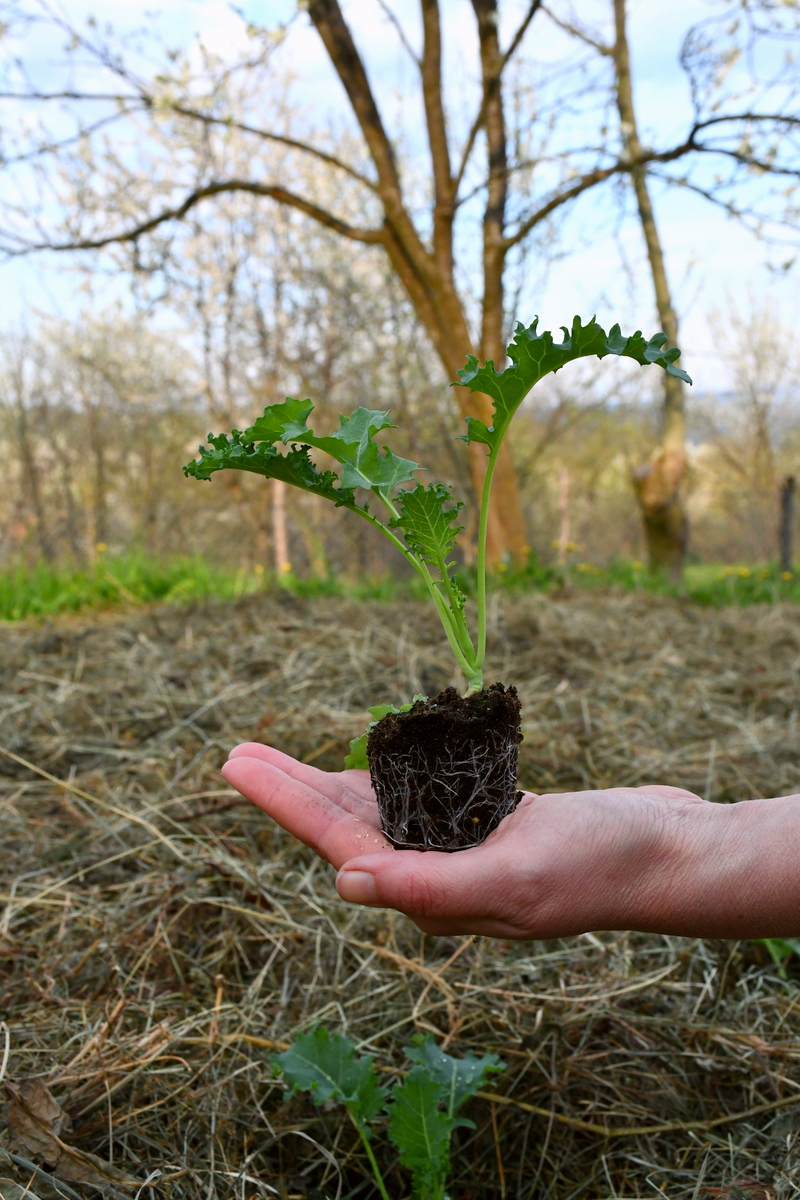
Here is a selection of kale worth trying:
Lacinato Kale – also known as Dinosaur or Nero di Toscana, this kale dates back to the 18th century. Leaves have a heavily savoyed (curled and wrinkly) texture. At maturity, leaves grow to 18″ long.
Scarlet Kale – if you are growing kale for beauty, this variety is spectacular in the winter garden. The color alone makes it worth growing. Also, very frost-hardy.
Red Russian – is a lacier kale with flat, toothed leaves and grey-green veins which brighten after frosts. A wonderful bonus is that it matures in 50 days, which is virtually no time at all. Seeds are also open-pollinated.
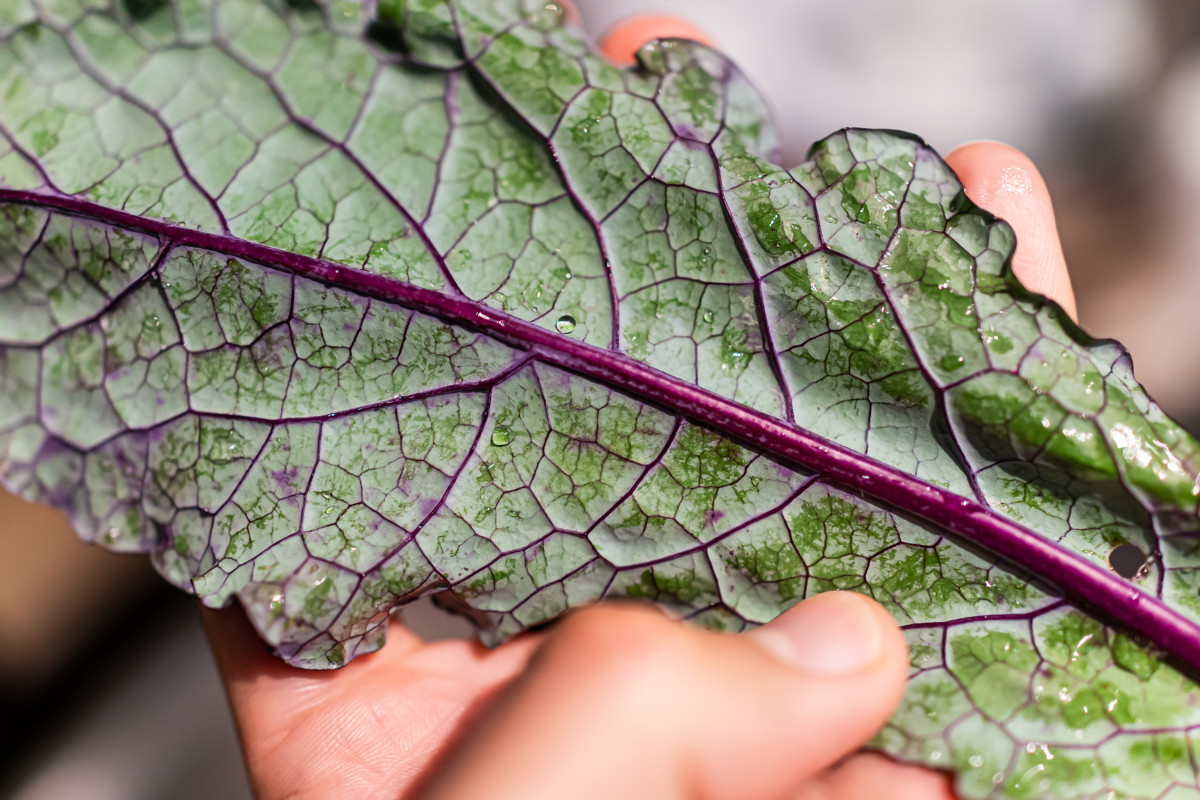
Siberian Kale – if it’s large blue-green leaves you’re after, Siberian kale is definitely worth a try. Some say that it can withstand the harshest of winters. Perfect variety for colder climates.
Redbor Kale – one hybrid to make the list is Redbor kale. It produces reliably tall plants that are both dark and sweet, even sweeter after frost. One serving of red kale provides 150 mg of calcium.
Harvesting Cut-and-Come-Again Kale
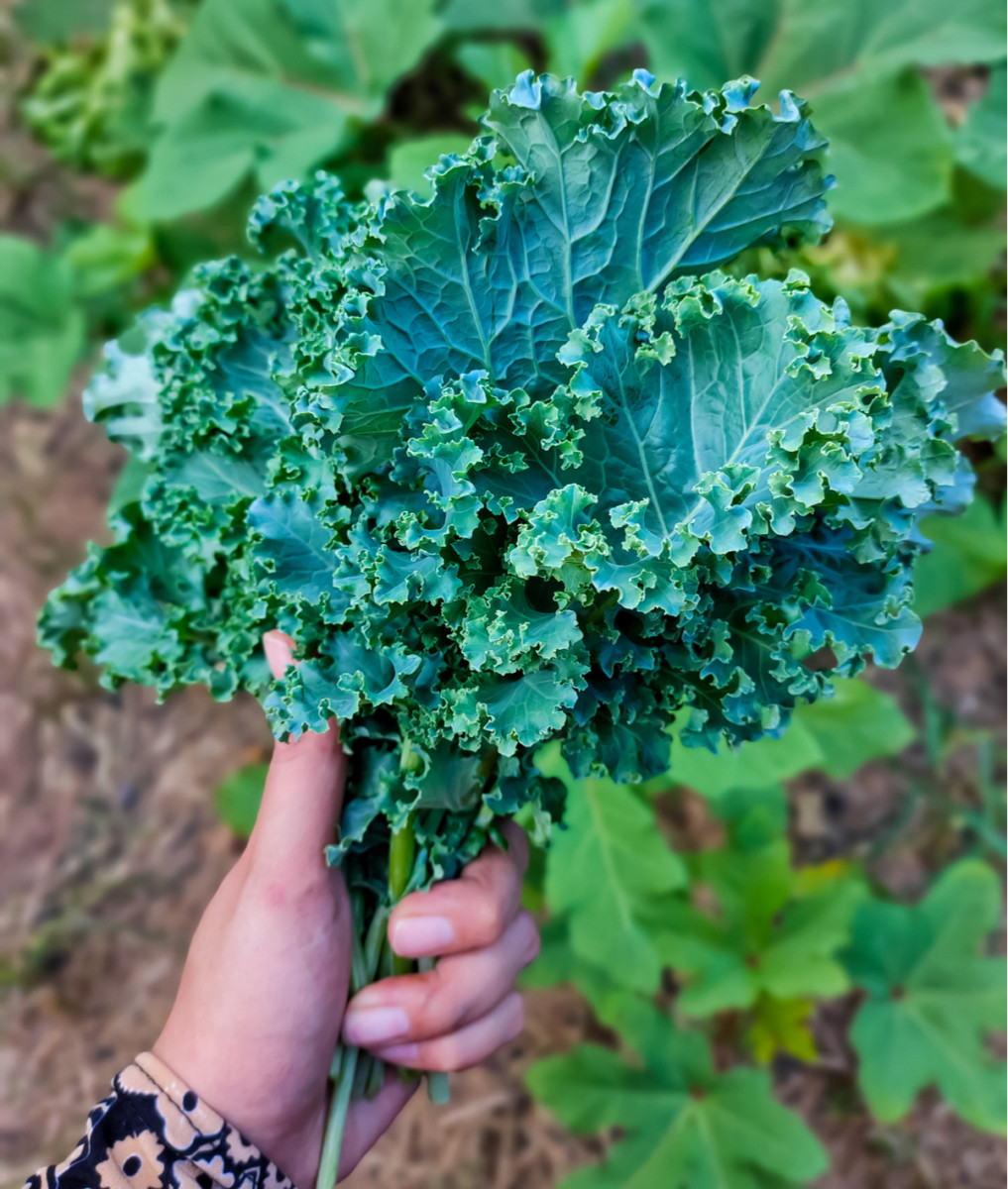
Kale can be eaten from the tiniest of sprouts, all the way to full-grown leaves reaching two feet or more. From spring to summer, from fall to winter – way past freezing temperatures headed down to 20°F.
Extending the time of your kale harvest is dependent on you removing the outer leaves only.
Leaving the center to keep extending upwards and outwards. Cutting the central bud means the end of your cut-and-come-again harvest. Take care to leave it alone.
While you are out harvesting, be sure to pay special attention to the entire plant, removing yellow or damaged leaves. Simply toss those on the compost.
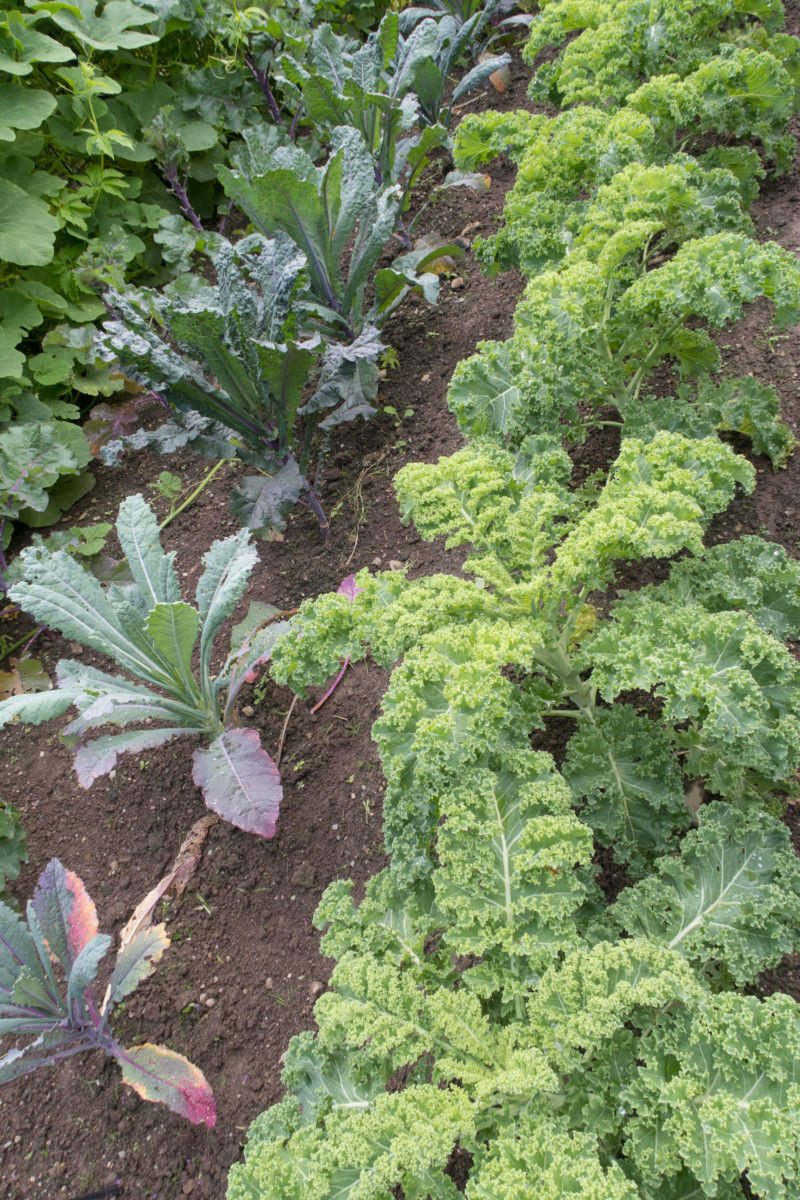
If you keep to a harvesting routine, you’ll be able to harvest kale weekly.
Summer harvesting tip: in a particularly hot summer, kale leaves may develop a bitter flavor from too much heat and exposure to the sun. Harvest only younger leaves at this critical time.
Must-try Kale Chips Recipe
Out of all the ways to eat kale, chips are among the most popular.
You can make them in an air fryer or bake them in the oven.
The best kale chips start with homegrown kale.
It starts with preheating your oven to 300°F, then rinsing and drying your kale. Get out your salad spinner for this.
Remove the leaves and set the stems aside for a warming soup or stew.
Drizzle olive oil over the leaves and massage it in with your hands.
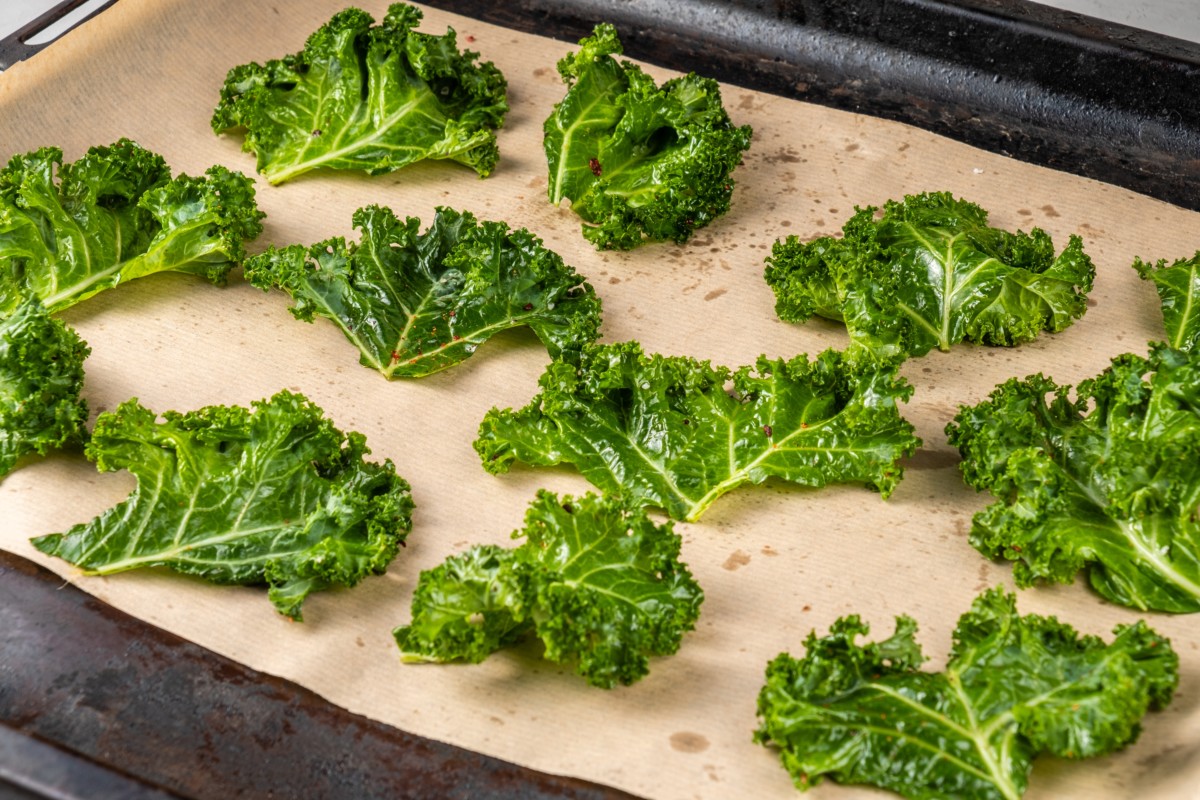
Add your choice of seasonings: salt, pepper, garlic powder, curry powder, cumin powder, chili powder, onion powder, smoked paprika or nutritional yeast. Then spread the kale on baking sheets and pop them in the oven for 10 minutes. After this time, flip the chips over and continue to bake for 7-15 minutes longer. They should be crispy, but never burnt.
Let your homemade kale chips sit for at least 5 minutes before plucking them one by one from the tray.
How many batches of crispy kale goodness can you make from your cut-and-come-again kale patch? As often as your harvest allows. Perhaps even every week at the height of your leafy green season.
Before you go, here are 21 more delicious “Cut & Come Again” Veggies you can harvest all season long.

Get the famous Rural Sprout newsletter delivered to your inbox.
Join the 50,000+ gardeners who get timely gardening tutorials, tips and tasks delivered direct to their inbox.

